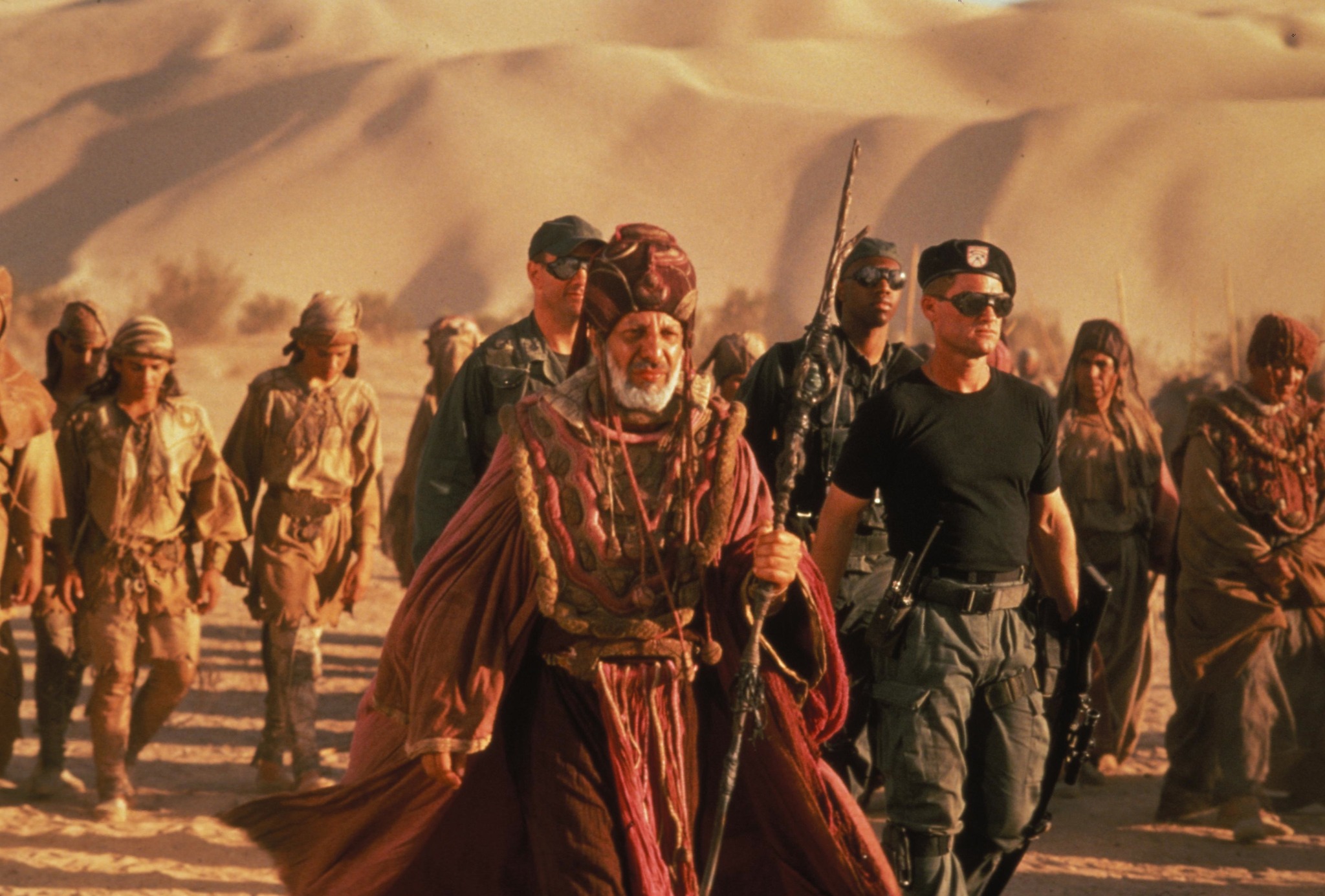Stargate (1994)

“Stargate,” released in 1994 and directed by Roland Emmerich, is a captivating blend of science fiction, adventure, and mythology that has left an indelible mark on the genre. This film, with its imaginative narrative and groundbreaking special effects for its time, opens up a portal to a universe teeming with ancient mysteries and interstellar conflicts.
The film begins with the discovery of a mysterious artifact known as the Stargate, a large, circular device with intricate symbols. This artifact is unearthed by a team of archaeologists led by Dr. Daniel Jackson, a brilliant but unconventional scientist played by James Spader. Jackson is initially dismissed by his peers but soon proves his worth by deciphering the symbols on the Stargate, revealing that it is a gateway to another world.

As the story unfolds, the Stargate is activated, leading a team of soldiers and scientists, including the skeptical Colonel Jack O’Neil, portrayed by Kurt Russell, to travel through it to an alien planet. This new world, which is reminiscent of ancient Egypt, is inhabited by an advanced race of beings who worship a powerful, tyrannical deity named Ra. Ra, portrayed by Jaye Davidson, has enslaved the local population, using them as a means to maintain his god-like status and control over the planet.
“Stargate” combines elements of ancient Egyptian mythology with futuristic science fiction, creating a narrative that is both compelling and thought-provoking. The film explores themes of human resilience, the search for meaning, and the clash between ancient beliefs and advanced technology. The depiction of Ra as a god-like alien who manipulates human history adds a fascinating layer to the story, blending historical and speculative fiction in a way that challenges viewers’ perceptions of both the past and the future.

The visual effects of “Stargate” were groundbreaking for its time, particularly in its portrayal of the alien world and the Stargate itself. The design of the Stargate, with its swirling vortex and shimmering event horizon, captured the imagination of audiences and set a new standard for visual effects in science fiction cinema. The film’s use of practical effects, combined with early CGI, created a sense of realism that enhanced the otherworldly aspects of the story.
The film’s score, composed by David Arnold, further elevates the cinematic experience. The music, with its sweeping orchestral arrangements and evocative themes, complements the film’s epic scope and emotional depth. Arnold’s score helps to immerse viewers in the film’s world, heightening the sense of adventure and wonder.

“Stargate” also serves as a precursor to a larger franchise, spawning a successful television series and several spin-offs. The TV series “Stargate SG-1,” which began airing in 1997, continued the story and expanded the universe introduced in the film. This series built on the film’s foundation, exploring new characters, worlds, and themes, and cementing the Stargate franchise’s place in popular culture.
In conclusion, “Stargate” is a film that skillfully blends science fiction with mythology, creating a rich and engaging narrative that continues to captivate audiences. Its innovative visual effects, compelling story, and memorable characters make it a standout film in the science fiction genre. As viewers traverse through the Stargate, they are not only transported to a distant world but also invited to explore the boundaries of imagination and the possibilities of the universe.











